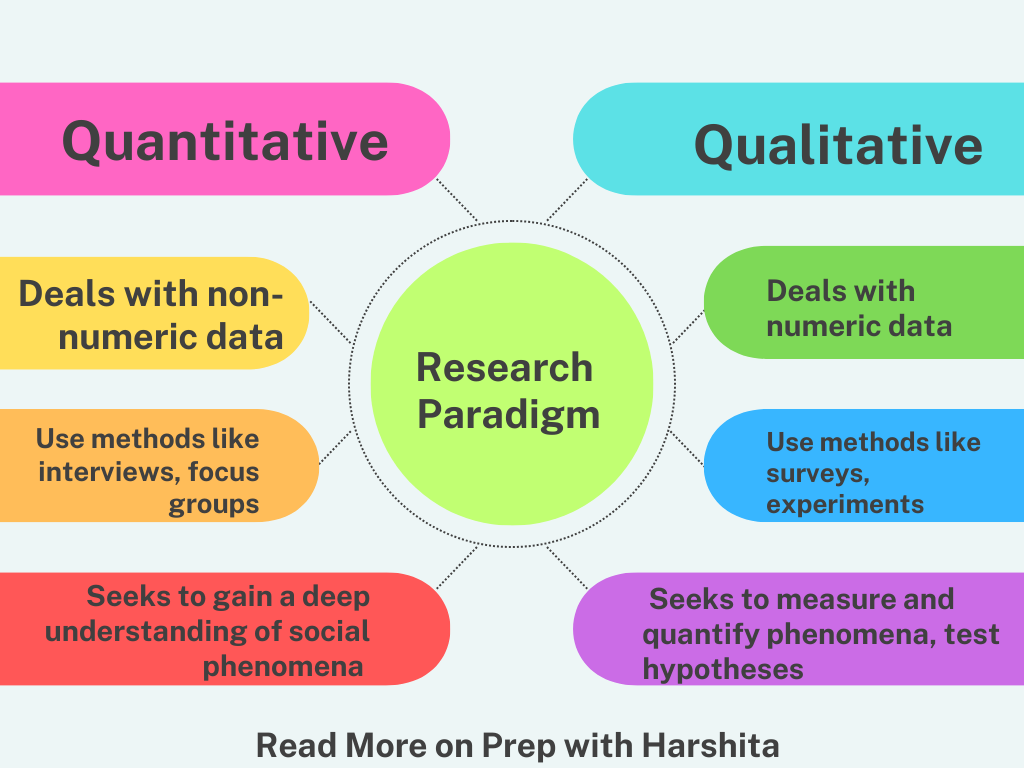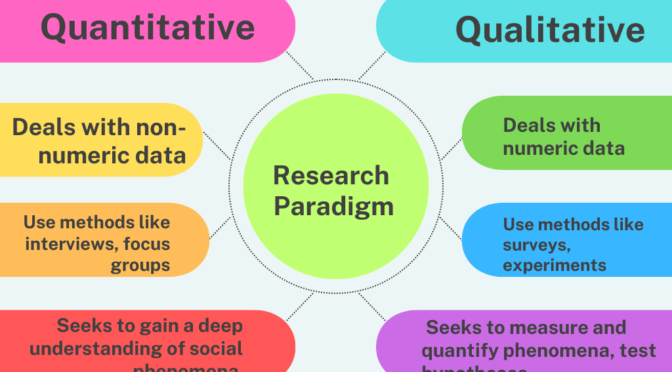Research paradigms are overarching frameworks or philosophies that guide the design and conduct of research. Two major research paradigms are qualitative research and quantitative research.
They differ in their approaches to data collection, and analysis, and the types of questions they seek to answer.
Let’s try to understand the research paradigm: Qualitative and Quantitative
- Qualitative Research Paradigm:
- Nature of Data: Qualitative research primarily deals with non-numeric data, such as words, images, or observations. It focuses on understanding the meaning and context of human experiences.
- Data Collection: Qualitative researchers often use methods like interviews, focus groups, participant observation, and content analysis to collect data.
- Analysis: Qualitative data is analyzed through techniques such as thematic analysis, content analysis, or grounded theory. Researchers aim to identify patterns, themes, and nuances in the data.
- Aim: Qualitative research seeks to gain a deep understanding of social phenomena, human behavior, and the subjective experiences of individuals. It is exploratory and often generates rich, descriptive narratives.
- Examples: Ethnography, case studies, phenomenological research, and narrative analysis are common qualitative research approaches.
- Quantitative Research Paradigm:
- Nature of Data: Quantitative research deals with numeric data, such as numbers, statistics, and measurements. It aims to quantify relationships and make generalizations.
- Data Collection: Quantitative researchers use methods like surveys, experiments, and structured observations to collect data. The data is typically collected from large samples.
- Analysis: Quantitative data is analyzed using statistical techniques, such as correlation, regression, and hypothesis testing. Researchers aim to identify patterns, trends, and relationships that can be generalized to a larger population.
- Aim: Quantitative research seeks to measure and quantify phenomena, test hypotheses, and make predictions. It is often used to answer specific research questions and establish causal relationships.
- Examples: Surveys with closed-ended questions, experiments with control groups, and large-scale statistical analyses in fields like psychology, sociology, and economics are common quantitative research approaches.
Also Visit: Prep with Harshita

Also Visit: Educational Research

